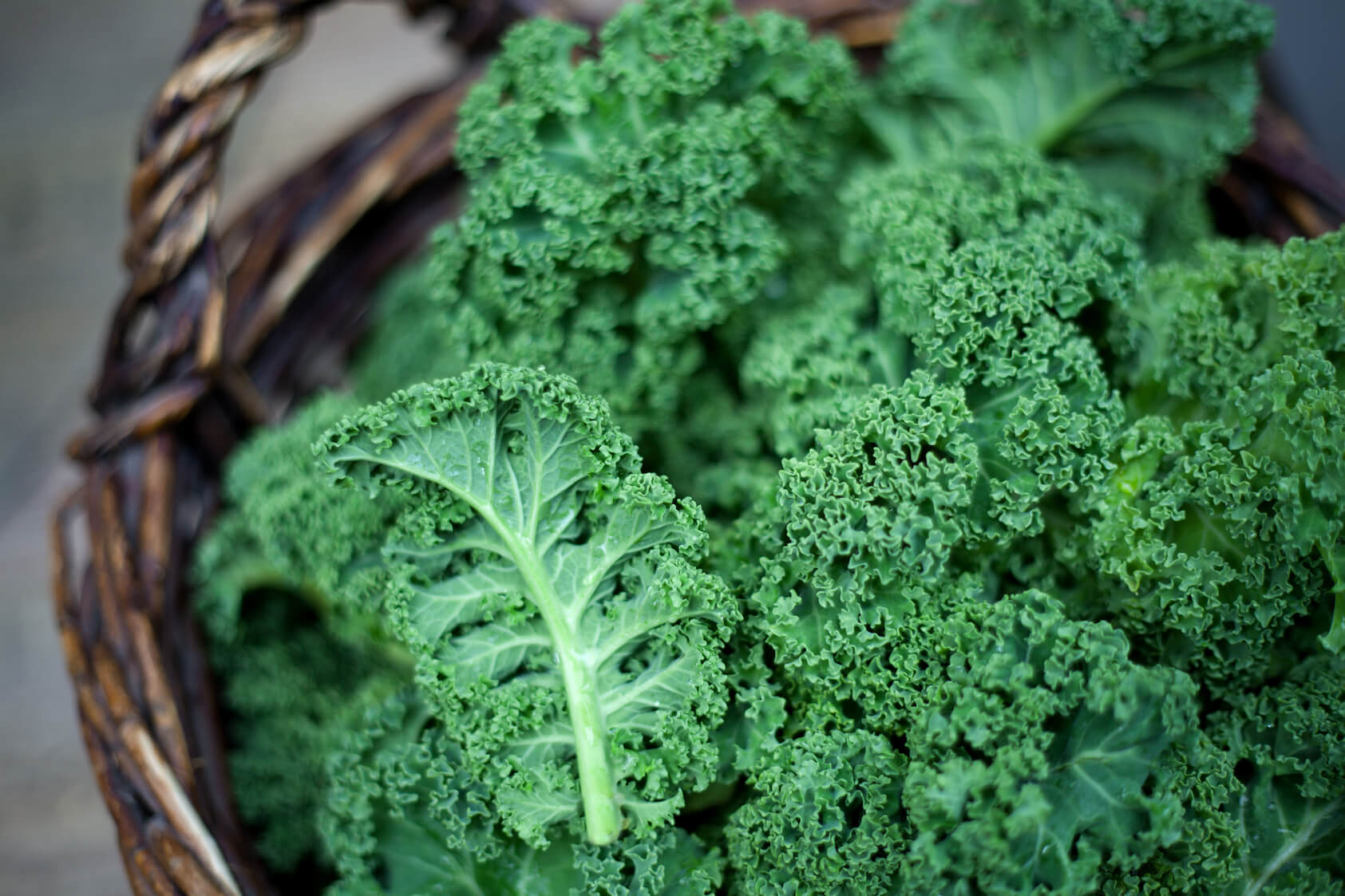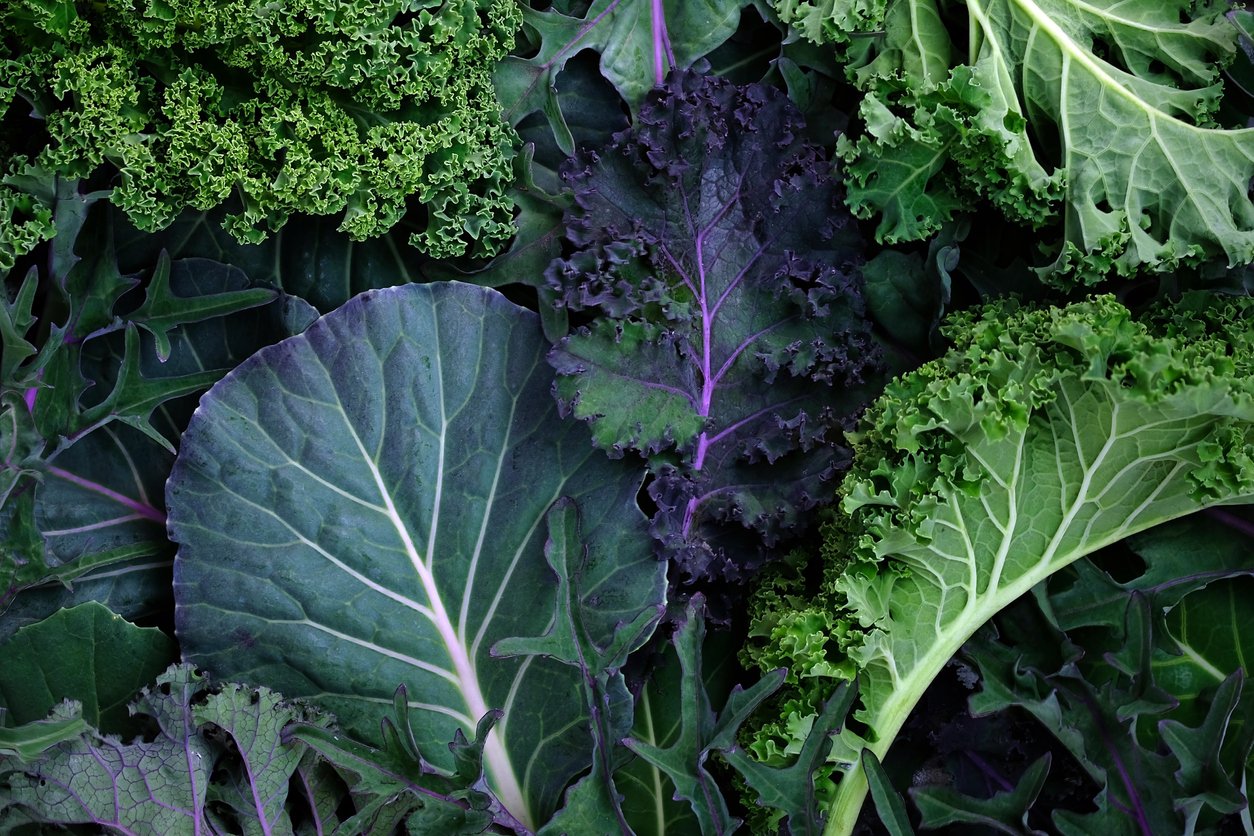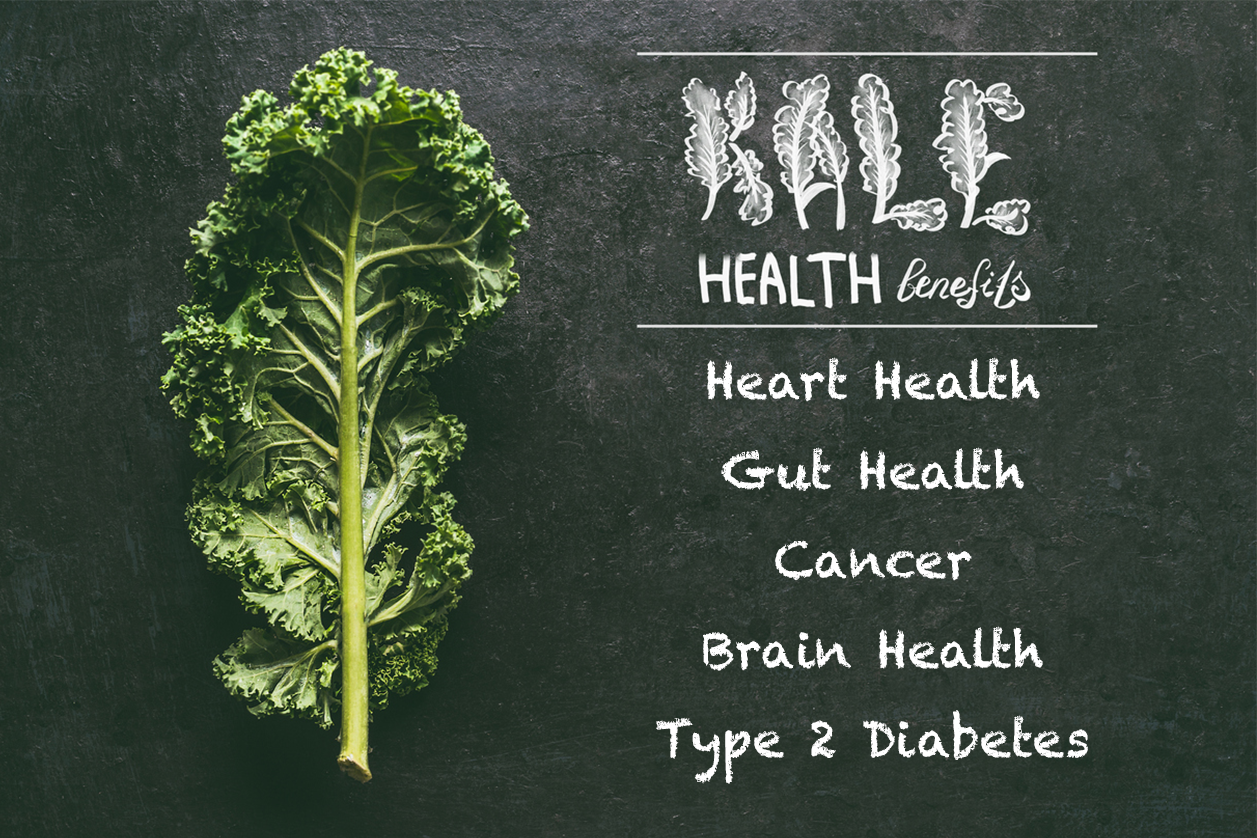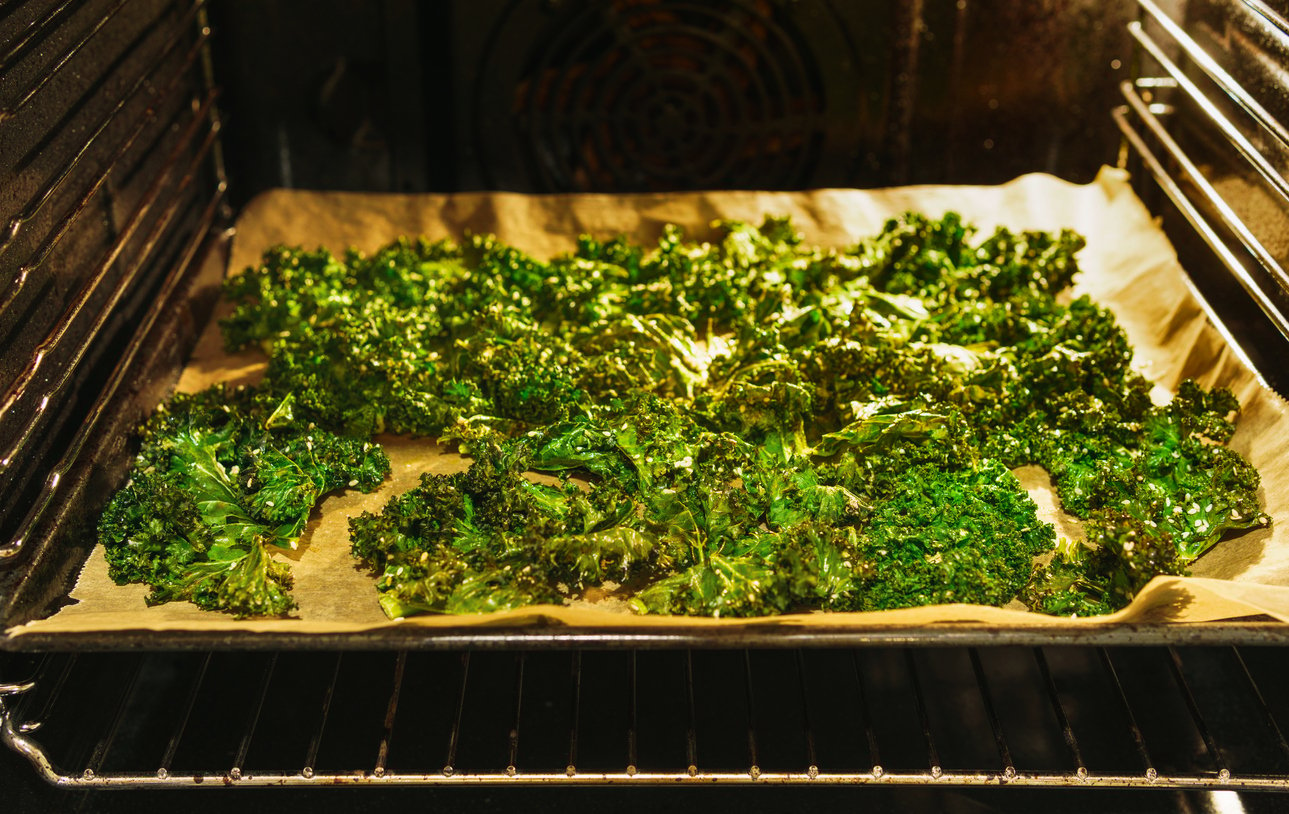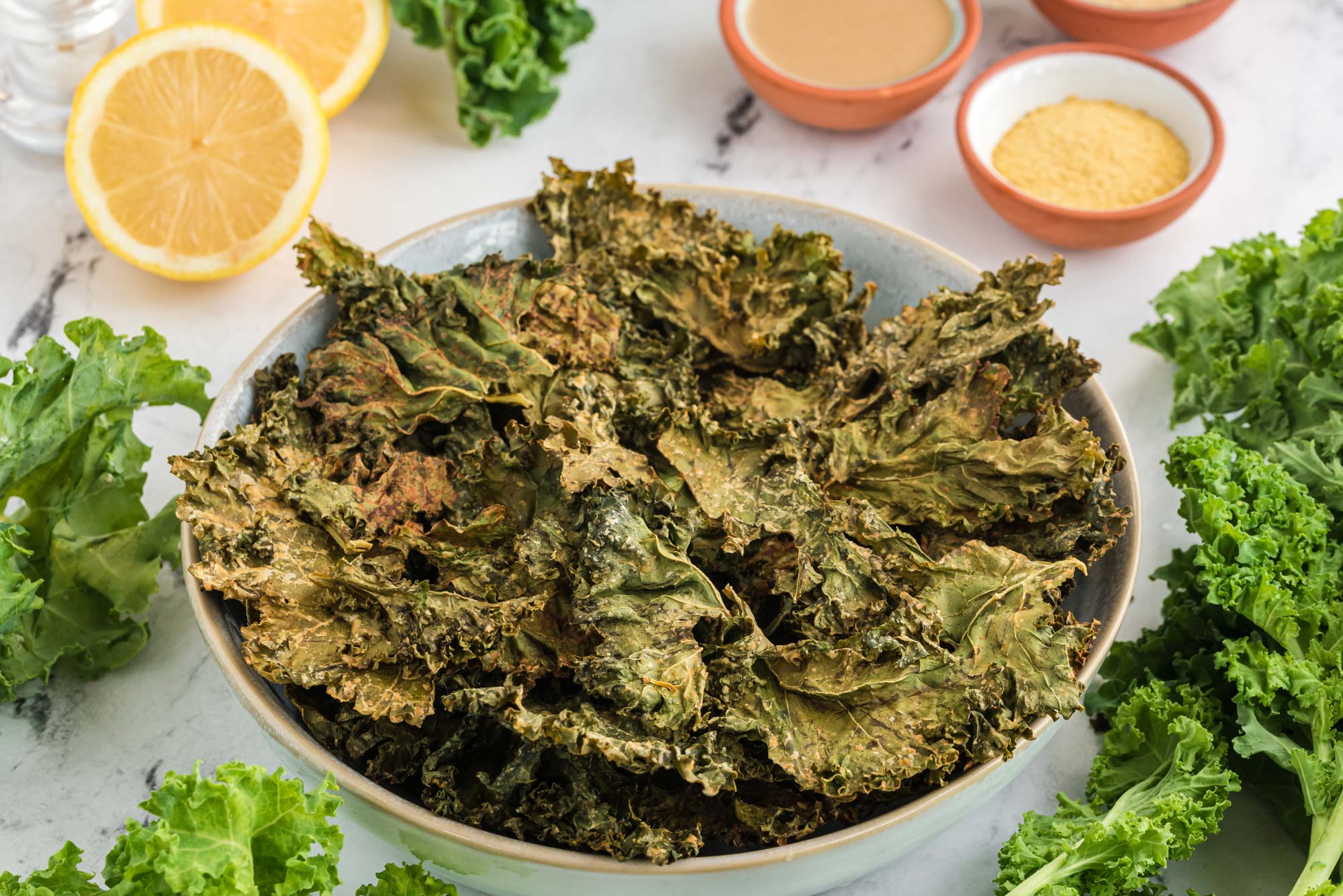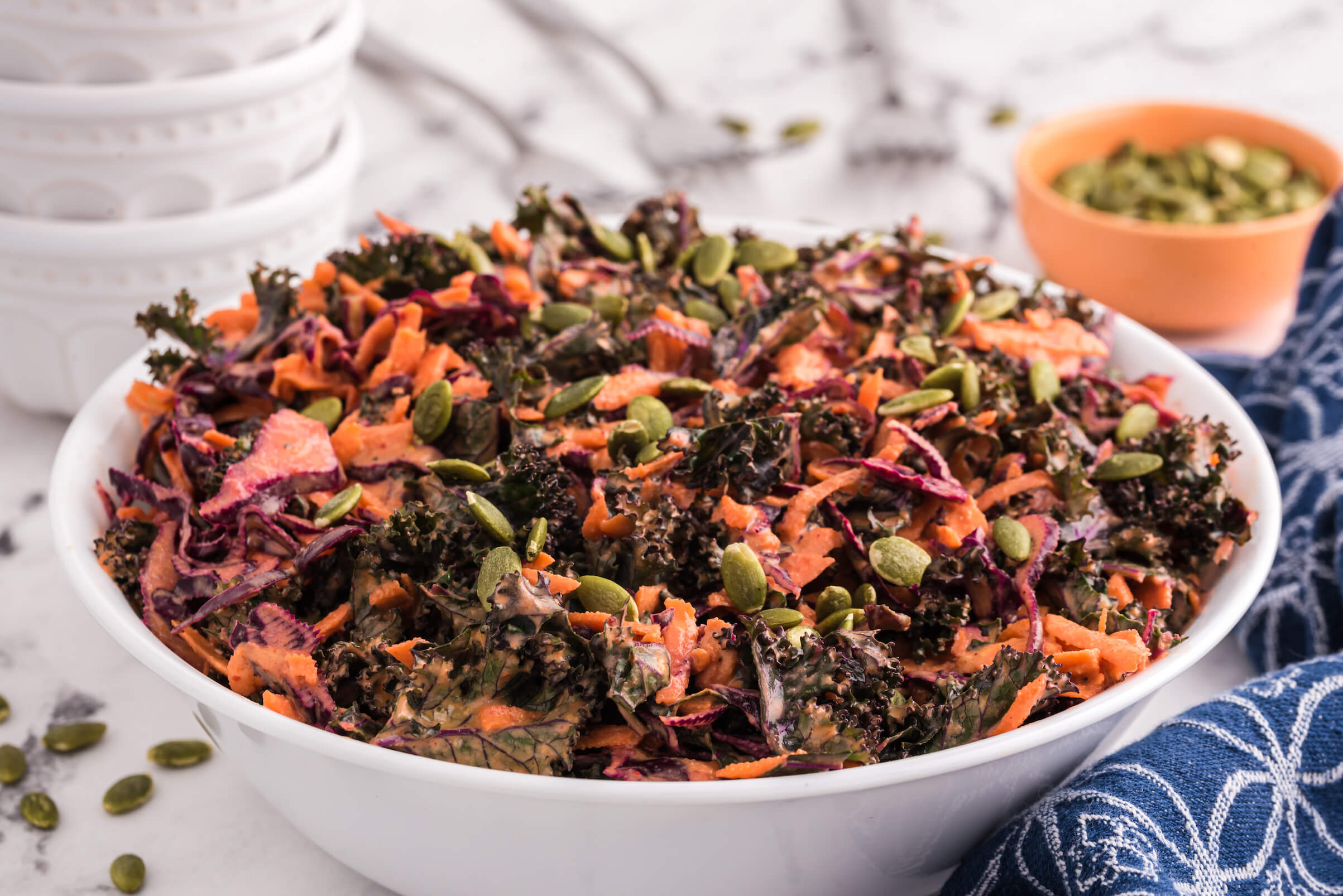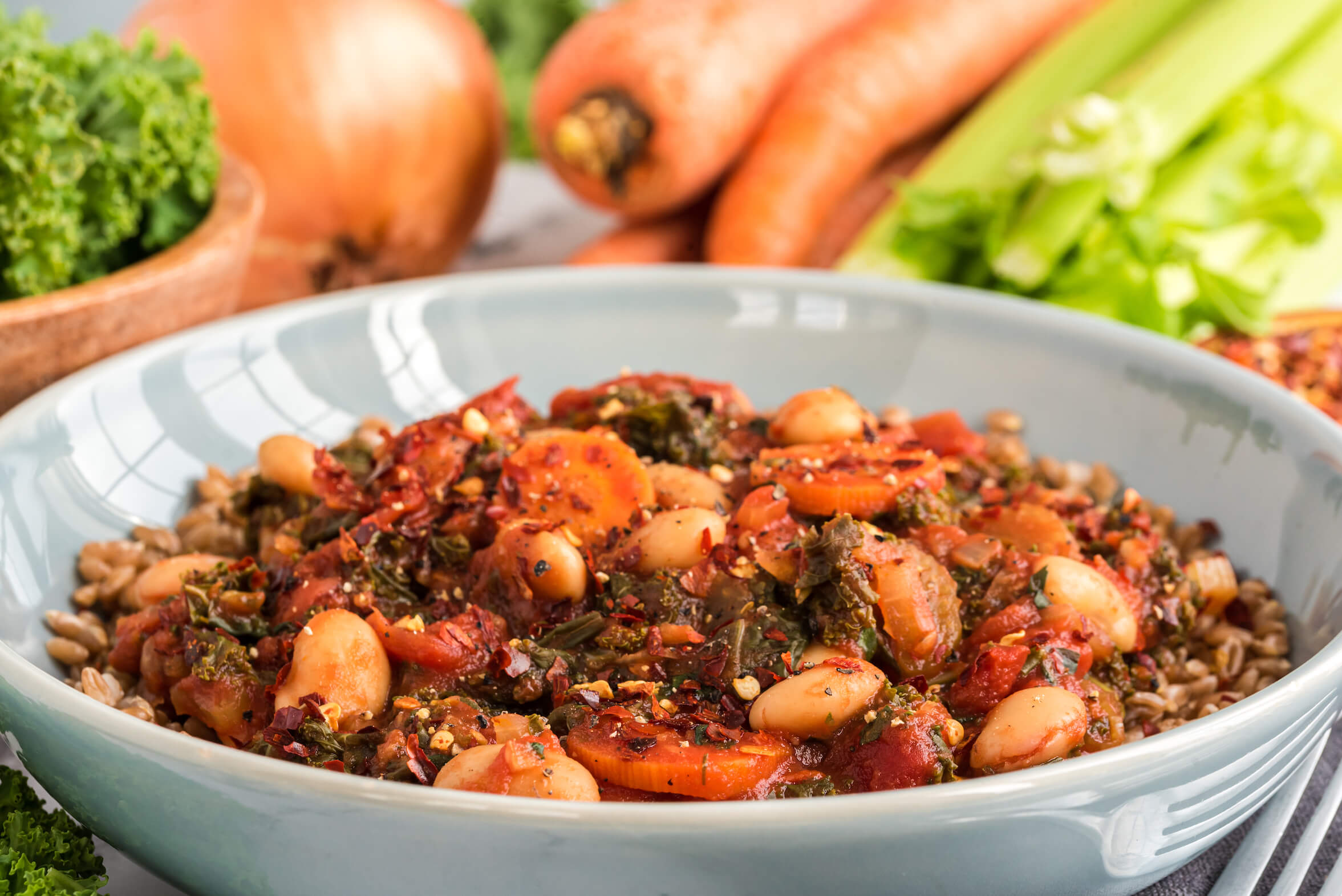For the first years of my life, my parents and I lived in a log cabin on Salt Spring Island, off the Pacific coast of Canada. We didn’t have a lot of money, so our garden was more than a fun hobby — it was our savings account. What we invested in the spring paid dividends all summer and fall. It was winter that was the problem because nothing we planted could survive those long, harsh winters.
Except kale.
Every August, we’d go out and plant a lot of it. By November, it might be the only aboveground crop that was still producing. I remember going into the garden after heavy snow; we’d have to brush the snowflakes off the leaves before harvesting. Not only did kale survive in the chilly ground, it seemed that it thrived — getting sweeter as the weather grew colder.
Kale has always been a centerpiece of my life. I’ve been alive for 48 years as of this writing, and I’ve enjoyed 48 kale harvests. We’ve always grown kale in my family, no matter where we lived, from frigid Canada to relatively balmy California.
These days, kale is regarded as a superfood (and, as we’ll soon see, with good reason). But we didn’t know that when I was a kid. We didn’t consider that kale has loads of antioxidants and polyphenols and amazing micronutrients. We just knew that it was a vegetable critical to our survival.
My parents almost called me Kale. (If I’d been quintuplets, my siblings and I might have been Tuscan, Dinosaur, Redbor, Lacinato, and Curly.) That’s how much they depended upon, and therefore honored, that leafy green. But apparently one of me was quite enough, and thankfully my parents took the more conservative route and settled on “Ocean” instead.
You probably don’t live in a remote log cabin far from cities or supermarkets, so you may never have developed the same feelings about kale. That’s OK. Even if you meet your survival needs in other ways, including kale in your diet can help you and your family thrive. In this article, we’ll look at why kale is one of the healthiest foods you can eat, and how to prepare it for maximum benefit and enjoyment.
Types of Kale
Kale is a cruciferous vegetable in the Brassica family, which includes cabbage, broccoli, Brussels sprouts, cauliflower, kohlrabi, and mustard, among many others. There are two main culinary types of kale: European kales of the genus Brassica oleracea, and the Alboglabra variety of that genus, also known as Chinese kale, Chinese broccoli, or gai lan.
You can further subdivide the European kales into different varieties, most of which I already shared in my musing about the names of my nonexistent siblings. Green curly kale is the default variety most people picture when they think of kale. Lacinato kale, also known as Tuscan or dinosaur kale, is notable for its bumpy leaves and absence of curly edges. Other common kales include Scotch (aka Vates) and Salad Savoy. Baby kale is just curly kale that’s harvested at an early stage of growth. (Truth in advertising there, unlike so-called “baby carrots” that are just regular carrots shaped into pellets by a machine.)
Another subspecies of European kale is Brassica napus. Common varieties include Red Russian kale and Siberian kale. As the names suggest, these are cultivars that can survive in harsh winter environments.
Kale Nutrition Facts
Kale, like all leafy greens, is low in calories and high in fiber and protein. In fact, 21% of the calories in kale come from protein. It’s a good source of several vitamins, including K1, C, A, and various B vitamins. It’s also rich in minerals such as copper, manganese, iron, magnesium, and potassium.
As a member of the cruciferous crowd, one of kale’s nutritional superpowers is its high concentration of glucoraphanin which converts to sulforaphane — a powerful cancer-fighting antioxidant — when its leaves are damaged (that is, cut or chewed). A half-cup of kale contains 34 mg of glucoraphanin.
Raw vs Cooked Kale
You can eat kale raw or cooked, which often sparks the question of which is healthier (that is, which provides the most nutrients). And, of course, people argue about which way tastes better, especially since most varieties of kale have a strong, earthy, bitter taste which can be muted somewhat by cooking.
If you’ve found raw kale too bitter to eat, you may want to keep trying. It turns out that including some bitter foods in your diet can be good for your overall health, and your gut health, in particular. And research shows that the more you eat slightly bitter foods like kale, the more your taste buds adapt to enjoy those tastes.
Rather than ranking raw or cooked kale as better for you, I’d encourage you to include both in your diet. They’re pretty similar nutritionally, with a few key differences. Cooked kale, for example, delivers significantly more vitamins A and K1. Cooking also reduces the effects of certain so-called “antinutrients” in kale, including goitrogens. On the other hand, raw kale has more vitamin C, which is water-soluble and can be lost during cooking, and has more of the potent antioxidant sulforaphane.
One more important consideration: Since cooked kale is softer and contains less water, it’s easier to eat larger quantities, which is a very good thing.
Kale Health Benefits
After bragging about all the great nutrients in kale, I’d better be able to back that up with evidence that eating kale can improve your health. Can I? Kale yeah!
Kale and Heart Health
One of the risk factors for heart disease is high cholesterol — specifically, high LDL cholesterol and high overall cholesterol. In 2008, researchers in Seoul, South Korea, gave 32 men with high cholesterol 150 ml of kale juice daily for three months and measured changes in their cholesterol levels and other biometrics related to heart health. They found that, on average, the men had more favorable cholesterol numbers: higher HDL, lower LDL, and a 24% reduction in the atherogenic index, a composite measure of cholesterol and triglycerides that is highly associated with coronary risk.
It’s not just about the juice, either. Eating kale is also a good idea when it comes to protecting your heart. A 2016 meta-analysis of eight studies that included over half a million participants found that eating leafy greens, especially cruciferous ones like kale, can reduce your risk of cardiovascular disease by over 15%. The author doesn’t beat around the (kale) bush: “…people worldwide are risking their health by not consuming enough GLV [that’s “green leafy vegetables” to you and me] on a daily basis.”
Is Kale Good for Gut Health?
Yes! Kale is excellent for your digestive health. In 2021, researchers from the University of Maryland took a bunch of mice who had been overfed until they became obese, and then gave some of them powdered curly green kale. They found that those mice who ate kale had less inflammation than the controls. They also exhibited higher concentrations of beneficial gut bacteria and lower concentrations of harmful ones than those just given a high-fat diet. (Our view on the use of animals in medical research is here.)
But, it’s not just mice that can reap the gut health benefits of kale. A 2017 study discovered that a diet rich in brassicas (like kale!) can reduce the population of sulfate-reducing bacteria — microorganisms found in about 50% of humans, which are associated with an increased risk of inflammatory bowel diseases. And a 2021 review of research found that human bodies can also turn the glucosinolates in kale and other cruciferous greens into compounds that make our beneficial gut microbes very, very happy. (I realize that “very, very happy” isn’t a term you often see in scientific research — but I think it gets the point across, so why not?)
Kale and Cancer
Kale, like other brassicas, can help prevent cancer. Many studies have found that the more cruciferous veggies people eat, the lower their risk of cancers of the colon or rectum. Cruciferous veggie consumption also has been shown to reduce the odds of breast cancer — a 2013 study estimated the reduction in risk at 15%. The Nurses’ Health Study, which followed over 180,000 women for up to 30 years, confirmed that estimate, especially for aggressive, estrogen receptor-negative tumors.
And there’s good news even for folks who aren’t into chewing their leafy greens. Some 2021 research found that kale juice was a potent cancer killer when mixed with neuroblastoma (nerve) cells in a test tube.
Kale Brain Benefits
The sulforaphane in kale appears to be protective against neurological diseases, including Alzheimer’s and other dementias. It activates a protein called Nrf2, which stands for nuclear factor erythroid 2-related factor 2, which is why I prefer to call it Nrf2 even though that sounds like a second-generation foam football. When Nrf2 gets excited, it increases the availability of a number of potent antioxidants that protect the nervous system from toxins and diseases.
If you’re into sulforaphane alliteration, the cruciferous crowd’s crowning contributors contain kale, cabbage, collards, and kohlrabi.
Potential Concerns With Kale
Kale and Type 2 Diabetes
The glucosinolates in kale and other brassicas that contribute to the vegetables’ bitter taste may be responsible for their ability to regulate blood sugar and prevent or moderate the impact of type 2 diabetes and other metabolic conditions.
One fascinating 2021 study out of Denmark put this hypothesis to the test by giving two groups of people with type 2 diabetes different cultivars of the same vegetables. One group got bitter versions of kale, carrots, cabbage, and beets, grown from traditional cultivars, and the second group received modern cultivars that were milder or sweeter. While both groups improved on a variety of health measures, the people who ate the bitter cultivars, which were richer in glucosinolates, had better insulin sensitivity and more improved glycemic control than those who consumed milder and sweeter varieties.
But here’s where things get confusing. While many studies show that eating kale and other cruciferous veggies can reduce the risk of type 2 diabetes, data from three prospective studies including 200,000 US health professionals followed for an average of 20 years show a mild elevation in risk of developing diabetes in the participants who consumed the highest levels of glucosinolates.
The researchers were left scratching their heads at the surprising results. They noted that their cohort skewed toward people of European descent, and may not accurately represent the breadth of human experience. And that the Food Frequency Questionnaire used in the study is not the most reliable instrument, as people have trouble recalling what they ate, and may misrepresent their diet as being healthier than it actually is.
So what are we to make of this study? First, I’d remember that cruciferous veggies, with all their glucosinolates, are still associated with better health and less disease overall — and that’s a fact. Second, if you’re at increased risk or have prediabetes or diabetes at present, and you plan on eating large amounts of foods that are high in glucosinolates, you may want to consult with your health care provider or do more frequent diabetes-related testing to see how your body is responding.
Kale Pesticides
Laboratory analysis found 55 different types of pesticides on samples of nonorganically grown kale. And while some of these may be benign, the USDA in 2019 discovered that 60% of nonorganic kale samples had contamination from the herbicide DCPA (marketed as Dacthal), which is classified as a “probable carcinogen.” As a result, kale has made the EWG’s Dirty Dozen for the last couple of years.
If you can, I’d recommend buying organic kale or growing your own. That said, nonorganic kale is still probably a huge net positive for your health, given all those cancer-fighting and other health-promoting compounds.
Pro tip for kale gardeners: If you harvest by trimming the outer leaves, the plant will keep growing, giving you multiple abundant harvests every year.
How to Cook & Prepare Kale
You can eat kale raw or cooked. Raw kale goes great with a dressing or sauce or seasoned with herbs and spices. One trick is to massage the kale with a fat, like avocado or olive oil, which softens it, decreases the size of the leaves (I’m not sure what magic makes that happen, but it’s very cool), and makes it easier to chew. Plus your hands will feel smooth and soft afterwards. And I’ll bet the kale loves it. (I love to receive massages, and I was almost named Kale.)
America’s Test Kitchen reveals that you don’t even need added fat; just kneading the destemmed and cut kale leaves can also tenderize them:
https://www.youtube.com/watch?v=hzCwZVRoknE
When cooking kale, you have a number of options. You can boil, steam, sauté, microwave, bake, or dehydrate its leaves. Different methods provide different textures and enhance, preserve, and degrade different nutrients. Steaming, for example, allows the kale to retain more nutrients than boiling, since some water-soluble vitamins end up in the water when the kale is fully immersed.
Stir-frying is another effective kale cooking method. If you avoid or minimize added oil, you can use water or broth to go oil-free.
And for a kale snack, you can bake or dehydrate seasoned leaves into kale chips.
How to Use Kale in Recipes
Add raw kale to salads or smoothies, use it as a topping for sandwiches and wraps, or blend it into sauces and dips.
You can cook kale in soups, stews, and chilies; sauté leaves with onions and other aromatics and serve as a side dish; brighten up pasta dishes and casseroles; include it in breakfast hashes and bean frittatas; eat steamed kale with a yummy sauce; and bake it into savory pies. And kale chips are great just on their own.
Since kale decreases so much in size when cooked and also loses some of its bright green hue, it can be a good vegetable to sneak into foods if you’re dealing with picky eaters (or if you’re a picky eater — it’s just a bit harder to fool yourself.)
Or if you want to shout about your love of kale for all the world to hear, you can even make a bright green kale cake with neon magenta frosting.
You can also combine raw and cooked kale in salads and grain bowls.
She loves the sweetness of the massaged kale leaves combined with the acidity of the lemon. The touch of olive oil helps to carry those flavors. To make it a full meal, she’ll add more veggies like red onion, radish, and avocado, some cooked whole grains, and maybe chickpeas or tempeh. Some sunflower or pumpkin seeds add some fun crunch, flavor, and even more nutrition.
If you’re feeling a bit more maximalist, or want to get inspired by some delicious kale-based recipes, we’ve got you covered.
Kale Recipes
Dreaming about all the delicious ways to utilize kale? Us, too! Say hello to these nutritious and tasty kale recipes that are guaranteed to make a repeat appearance in the roster of all-time favorite plant-based dishes.
1. Crispy Cheesy Kale Chips
Crispy Cheesy Kale Chips are crunchy, savory, and deliciously nutritious! Kale leaves make the perfect vehicle for umami and savory spices that capture the craveability of not-so-healthy potato chips. When crisped in the oven, kale transforms into crunchy bites that are a healthy swap any time you get a snack-time craving. Plus, you get a pretty wholesome serving of vitamin K, B vitamins, vitamin C, and beta carotene. Happy snacking!
2. Harissa Kale Slaw
If you ask us, leafy greens like kale are the answer to just about anything, including creating a uniquely satisfying and flavorful crunchy slaw that is delicious solo or piled high on your favorite bean burger, grain bowl, or wrap. Harissa adds a nice element of sweetness with a subtle hint of heat and pairs well with the crunch of earthy green kale as well as red cabbage, carrots, and pumpkin seeds. Not to mention the gorgeous spectrum of colors you’ll get once you toss it all together!
3. Tuscan Beans and Kale
There are very few plant-based foods that don’t harmonize perfectly with kale, and this comforting and savory Tuscan Beans and Kale stew is no different. Kale adds earthy and slightly bitter notes with a hearty texture that stands up well to protein-rich butter beans and the sweet and acidic flavors of the tomatoes. What’s more, this easy-to-prepare dish is full of flavor and nutrition. Beans are packed with protein, fiber, B vitamins, and minerals like iron, magnesium, and phosphorus. When combined with antioxidant, folate, and magnesium-rich kale you’ve got a nutrient-dense meal you’ll be glad to eat!
Conclusion
Kale is a highly nutritious superfood with the potential to help stave off chronic disease and to improve many health conditions. A large share of its nutritional superpowers may come from its high concentrations of compounds that your body converts to sulforaphane, as well as vitamins A, C, and K1. There are many ways, raw and cooked, to enjoy the various types of kale. However you prepare and serve it, you’ll find that this high fiber, leafy green, cruciferous vegetable can be a friend of your taste buds and your health.
If you’re looking for a way to get the maximal benefits of sulforaphane, then here’s a resource you might want to know about. Epiceutical Labs has developed the world’s first shelf-stable form of sulforaphane — made from broccoli sprouts. It’s called BrocElite, and it offers the equivalent of drinking about three ounces of fresh juice made from broccoli sprouts. You can find out more here. (If you make a purchase from this link, Epiceutical Labs will make a contribution to support the mission of Food Revolution Network.)
Tell us in the comments:
- When did you first taste kale? Was it love at first bite, or did it take some getting used to?
- What’s your favorite way to enjoy kale?
- What varieties of kale do you like? Which would you like to try?
Featured Image: iStock.com/alice dias didszoleit
